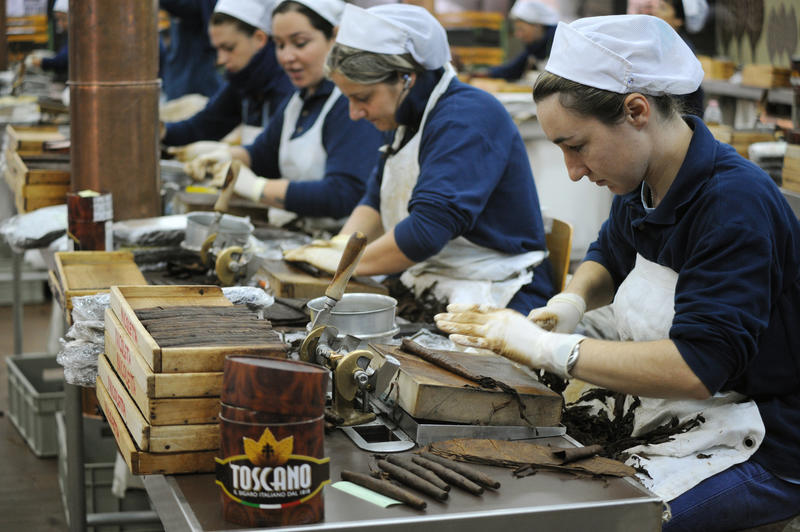16 Iconic Gems to Check Out in Tuscany
16 Iconic Gems to Check Out in Tuscany

Pizza, gelato, and Ferrari have become the Italian icons—images our minds muster up when we think about Italy. But, if we get more specific in identifying the symbols that convey Tuscany itself, there are many you wouldn’t imagine originated here on Ciclismo Classico’s home turf. The list is a long one, so we’ve chosen sixteen of our favorites.
1. Collodio, Tuscany: Pinocchio’s Birthplace.
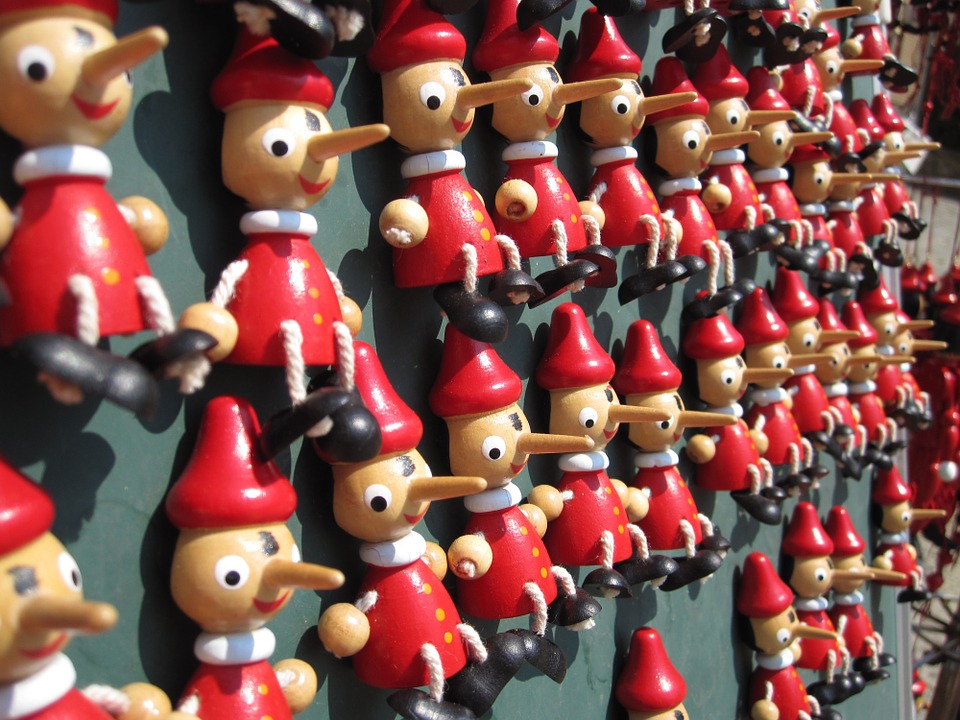
The Parco Pinocchio was opened in 1956, the result of a countrywide artistic collaboration. Artists from across Italy participated in the creation of sculptures and mosaics that appeal to child and adult alike. Scenes from the globally famous fable are represented within the park. The park was named after a character created by author Carlo Collodi. Born Carlo Lorenzini in Florence (1826), he became a well-known political author. In the course of his journalistic career, he began to write political allegory. After many years of work, he took his mother’s hometown as his pen name (Collodi) and wrote Pinocchio. The now famous marionette was used by Lorenzini as an allegorical figure who represented the liberating metamorphosis from strict forms of his wooden existence to the freedom of being a truly human boy.
Lorenzini died in Florence in 1890, a mere seven years after Pinocchio was published. He did not live long enough to enjoy the spectacular success his book created. Now translated in more than 100 languages, it’s one of the world’s best-selling books of all time.
2. The Leaning Tower of Pisa.
One of Tuscany’s greatest icons is the Tower of Pisa. This special bell tower and it’s crooked story all started in 1173, when construction began.
Thanks to the soft ground, it had begun to lean by the time its builders got to the third story, in 1178. Shifting soil had destabilized the tower’s foundations. Over the next 800 years, it became clear the 55-meter tower wasn’t just learning but was actually falling at a rate of one to two millimeters per year! Today, the Leaning Tower of Pisa is more than five meters off perpendicular.
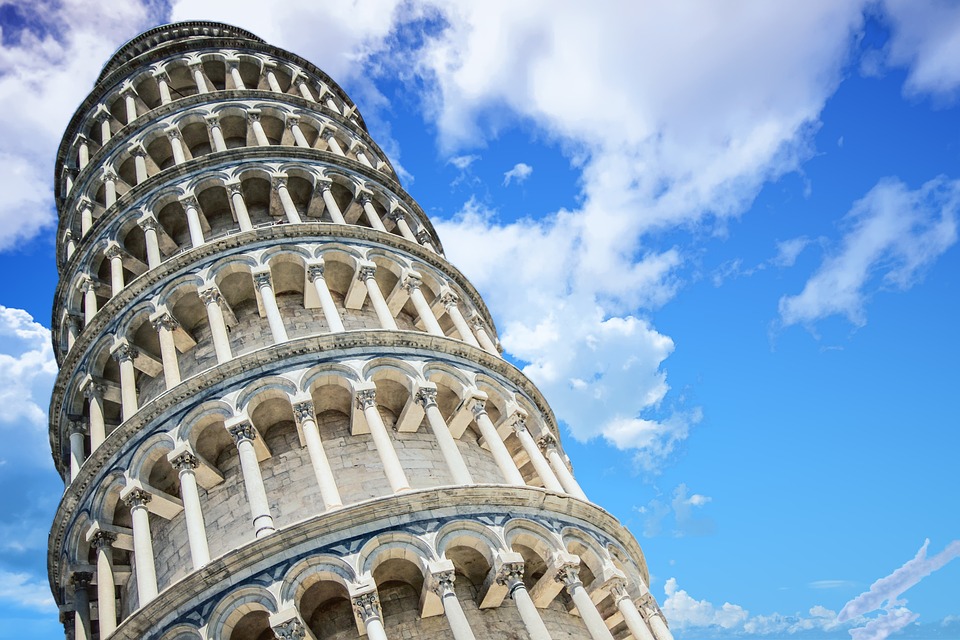
Its architect and engineer tried to correct this by making the remaining stories shorter on the uphill side but to no avail. It kept leaning more and more. The lean, first noted when three of the tower’s eight stories had been built, resulted from the foundation stones being laid on soft ground consisting of clay, fine sand, and shells.
The next stories were built slightly taller on the short side of the tower in an attempt to compensate for the lean. However, the weight of the extra floors caused the edifice to sink further and lean more. What many people do not know is that the the cathedral and baptistery, both in the Piazza of Miracles, are also sinking!
3. The story behind Tuscany’s most famous cypress-lined road.
The book ”War in Val d’Orcia, An Italian War Diary 1943-1944” was written by Iris Origo, of Anglo-American descent, who with her husband, Antonio Origo, owned and oversaw the woods and farms of the broad valley of the Orcia River southeast of Siena. The diary is a remarkable account, published unedited, as it was written in the chaos of the moment. It tells of refugee children from bombed-out slums of Genoa and Turin camping out in the schoolhouse, of bands of Partisans hiding in the hills, and of escaped Allied POWs appearing in the night, needing food, shoes, and maps of the countryside, before fleeing on their way.
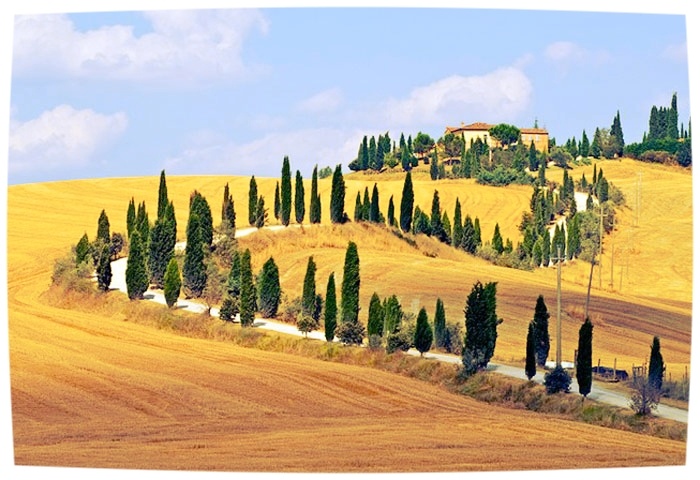
In 1924, when the Origos came to the valley, it was a barren, eroded moonscape. Photos in the office of La Foce, the family home, show how ponds were dug for irrigation, and eroded clay areas called crete were bulldozed into fields. It has been called “the villa that defines Tuscany.” Now just enough of the crete remain on ridges to lend contrast to the cosseted landscape. The Origos also built farmhouses, a school, and a clinic for poor, illiterate tenant farmers. The garden, designed by English architect Cecil Pinsent between 1925 and 1939, grew gradually.
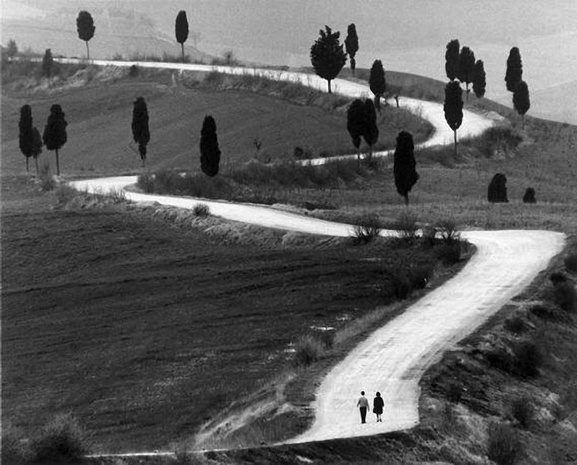
The Zig-Zag Road
The house is surrounded by a formal Italian garden, which is divided into geometrical “”rooms”” by box hedges with lemon trees in terracotta pots. Travertine stairs lead to the rose garden and a winding wisteria-covered pergola bordered by lavender hedge. Gentle informal terraces climb up the hill, where cherry trees, pines, and cypresses grow among wild broom, thyme, and rosemary.
A pioneer landscape architect himself, Antonio Origo created the famous cypress-lined zig-zag road to connect La Foca with the other fifty plus farmhouses on their property.
4. Gallo Nero: The Black Rooster of Chianti.
According to legend, the so-called gallo nero or black rooster became a symbol of the Chianti region after a horse race was organized by the two rival republics of Siena and Florence to decide their official borders.
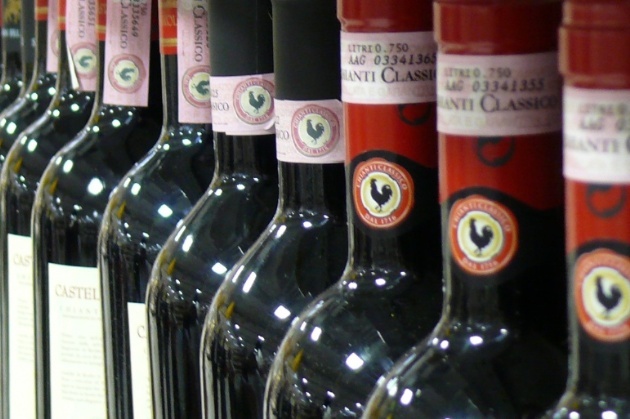
The legend goes like this: a cockcrow was established as the departure signal for the two horsemen in their respective cities; however Florence tricked Siena by starving its black rooster so that it began crowing before sunrise, enabling the Florentine rider to set off well in advance of his Sienese rival. The Florentine met his opponent a mere 12 kilometers from Siena, thereby winning the Chianti region for Florence.
The black rooster became a symbol of the League of Chianti in the Middle Ages and Gallo Nero is now the official mark of the Chianti Classico Wine Consortium, one of the most renowned wine brands in the world.
5. Cappella della Madonna di Vitalet: A quintessential Tuscan icon.
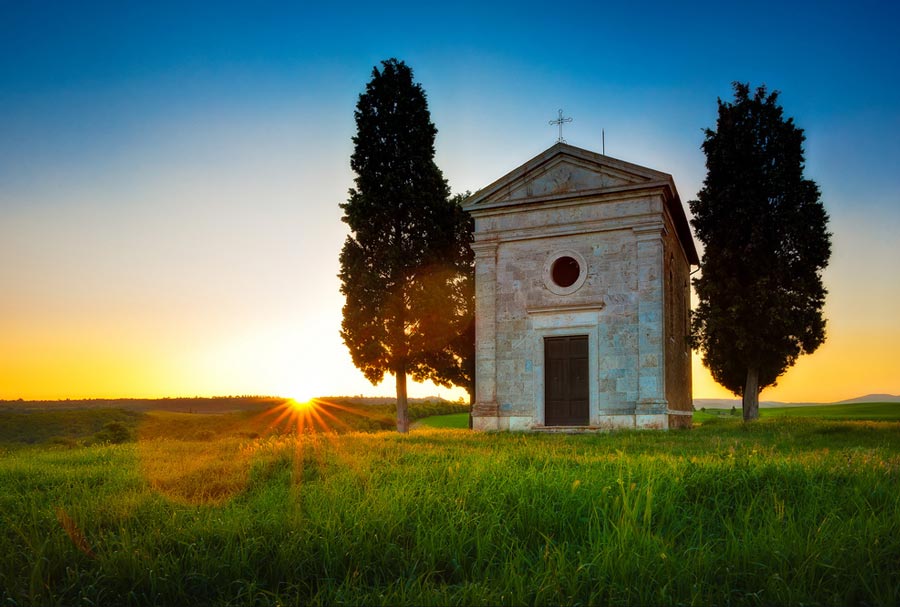
6. The Chianti Flask as a Wine Icon.
A fiasco or flask is a typical Italian style of bottle, usually with a round body and bottom, partially or completely covered with a close-fitting straw basket. The basket is typically made of sala, a swamp weed, sun-dried and blanched with sulfur. The basket provides protection during transportation and handling, and also a flat base for the container. Thus the glass bottle can have a round bottom, which is much simpler to make by glass blowing.

Fiaschi can be efficiently packed for transport, with the necks of inverted bottles safely tucked into the spaces between the baskets of upright ones.The fiasco is only used by a few makers of the wine as most Chianti is now bottled in more standard shaped wine bottles.
7. Home of the Vespa: Pontedera village.
Pontedera is a small town in the province of Pisa in Tuscany. This place is home to the world-famous Piaggio company whose classic brands include the Gilera motorbike, the Vespa (a mod icon)……and the Ape three-wheeler (beloved by Sicilian peasant farmers and Delhi taxi drivers).
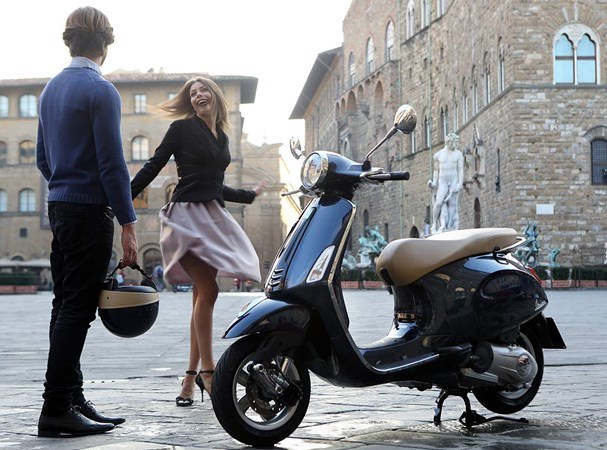
The factory has its own museum where you can see examples of their famous vehicles, ranging from the sublime to the silly, and evolution throughout the decades.
Prior to the war, Piaggio was a ship fitting and locomotive company. It moved into aircraft and then motorized vehicles in the mid 1940s. The first Vespa (wasp) was produced in 1946.
8. The Wild Boar Icon and The Fountain of Good Luck.
Il Porcellino (Italian “”piglet””) is the local Florentine nickname for the bronze fountain of a boar. The fountain figure was sculpted and cast by Baroque master Pietro Tacca (1577–1640) shortly before 1634 following a marble Italian copy of a Hellenistic marble original, at the time in the Grand Ducal collections and today on display in the classical section of the Uffizi Museum.
The original, which was found in Rome and removed to Florence in the mid-16th century by the Medici, was associated from the time of its rediscovery with the Calydonian Boar of Greek myth.
Tacca’s bronze, which has eclipsed the Roman marble that served as model, was originally intended for the Boboli Garden, then moved to the Mercato Nuovo in Florence center. It was originally facing East, in front of a pharmacy that gained reputation as the Farmacia del Cinghiale (Italian for “”boar””). To gain more space for market traffic, it was later moved to the side facing south, where a copy stands today.
The idea is to put a coin into the boar’s gaping jaws, letting it fall through the underlying grating for good luck, and then rubbing the boar’s snout to ensure a return to Florence—a tradition travellers to Florence have been doing since the late 17th century.
9. Duomo di Firenze Santa Maria del Fiore.
Ooh! How can we not mention this one? The Cathedral of Santa Maria del Fiore–Saint Mary of the Flower– in Florence was a marvel of art, architecture, and engineering. But it lacked a finishing ornament, a crown, if you will. The city fathers had a solution: to invite the finest masters to compete for the chance to design a dome. The rumors of this contest reached the ears of Filippo Brunelleschi, better known in Florence as Pippo the Fool. As soon as he heard about the contest, Pippo knew it was the chance he had been waiting for. “If I can win the contest, I will finally lose that nickname once and for all!”
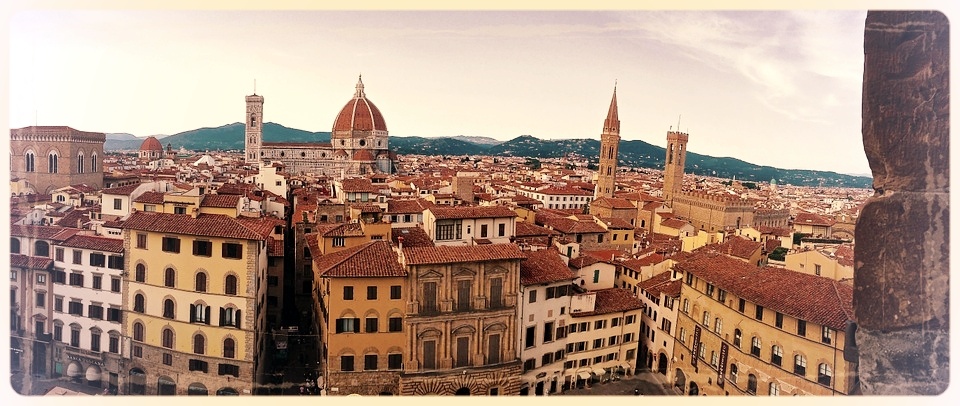
Work started on the dome in 1420 and was completed in 1436. The cathedral was consecrated by Pope Eugene IV on March 25, 1436, (the first day of the year according to the Florentine calendar). It was the first octagonal dome in history to be built without a temporary wooden supporting frame. It was one of the most impressive projects of the Renaissance.
10. Il Ponte Vecchio–the old bridge.
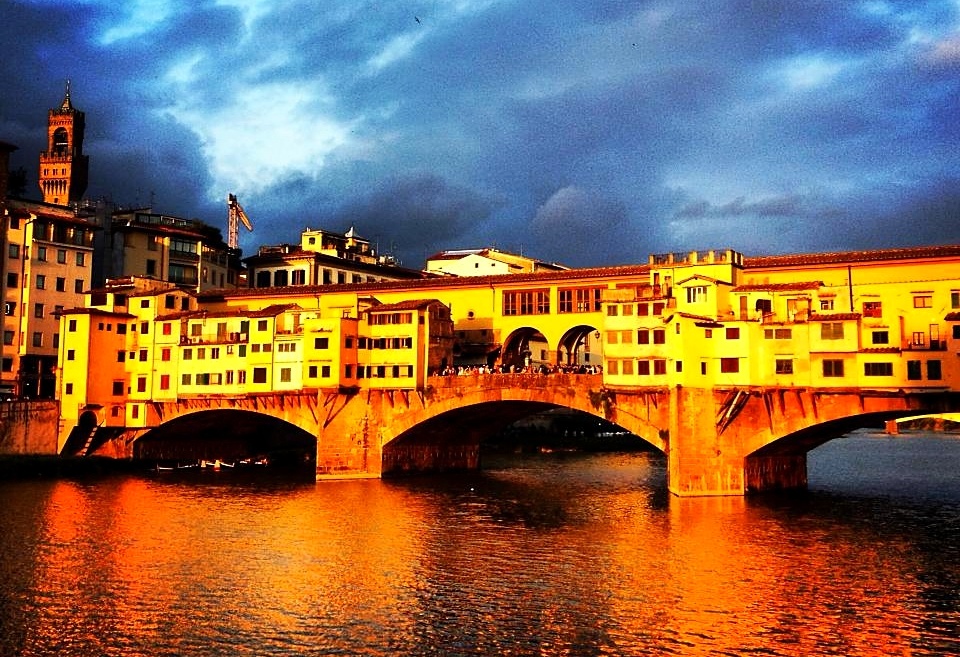
The Ponte Vecchio–or old bridge–is a medieval arched bridge over the Arno River in Florence, noted for still having shops built along it, as was once common. Butchers initially occupied the shops; the present tenants in those same shops are jewelers, art dealers, and souvenir sellers.
The bridge spans the Arno at its narrowest point where it’s believed that a bridge was first built in Roman times, when the via Cassia crossed the river at this point. The Roman piers were of stone, the superstructure of wood. The first mention of bridge fappears in a document from 996. After being destroyed by a flood in 1117, it was reconstructed in stone but swept away again in 1333 (save two of its central piers), and was rebuilt again in 1345.
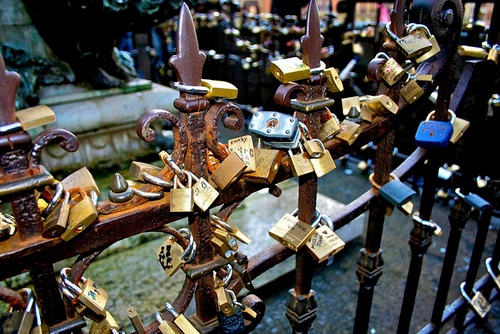
Love Locks: A Phenomenon
Did you know this bridge is a special place for lovers? Along the Ponte Vecchio, you’ll see many padlocks affixed in various places, especially to the railing around the statue of Benvenuto Cellini. This is a recent tradition for the Ponte Vecchio, although it has been practiced in Russia and in Asia before.
It was perhaps introduced by the padlock shop owner at the end of the bridge. It is popularly connected to idea of love and lovers: by locking the padlock and throwing the key into the river, the lovers became eternally bonded.
(Note: they do clean up the area around the statue every so often so if you place a lock there at some point––it may disappear! I speak from experience.)
11. Il Campo di Siena and the Palio race.
Of course, we cannot forget to mention the famous horse race, Il Palio di Siena–a highlight of summer with year-round preparation. The event features an historical and passionate horse race around the famous, iconic shell shaped main square “”Piazza del Campo”” in Siena. The piazza has become a famous icon since the shape of the piazza is so unique and beautiful. The horse race that is held twice each year, on July 2 and August 16. Ten horses and riders, dressed in the appropriate colors, represent ten of the seventeen contrade, or city wards.
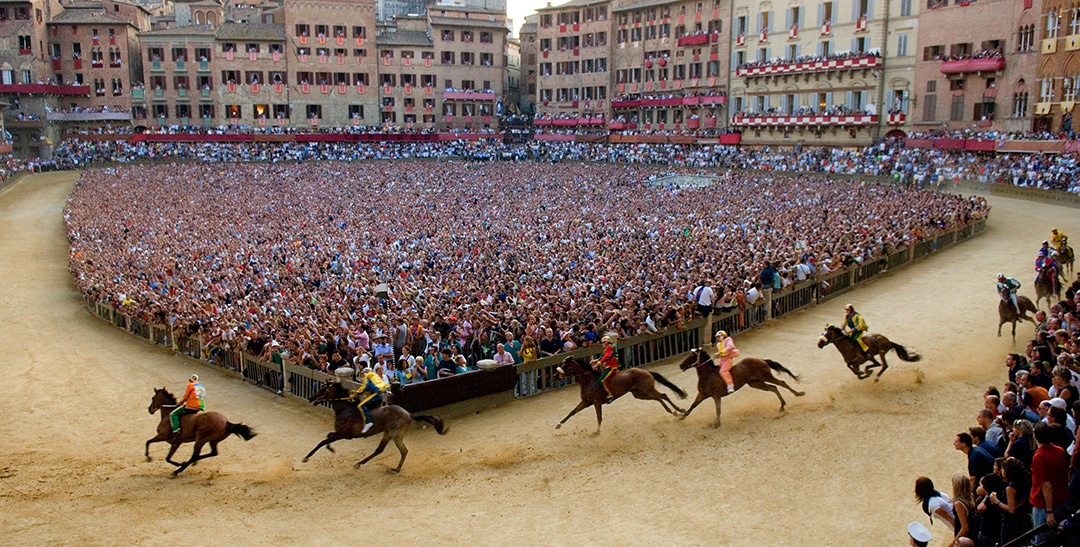
The race itself, in which the jockeys ride bareback, circles the Piazza del Campo, on which a thick layer of dirt has been laid. The race is run for three laps of the piazza and usually lasts no more than 90 seconds. It’s common for a few of the jockeys to be thrown off their horses while making the treacherous turns in the piazza, and indeed, it’s not unusual to see unmounted horses finishing the race without their jockeys.
12. A unique butcher at Macelleria Cecchini. King of the Florentine steak.
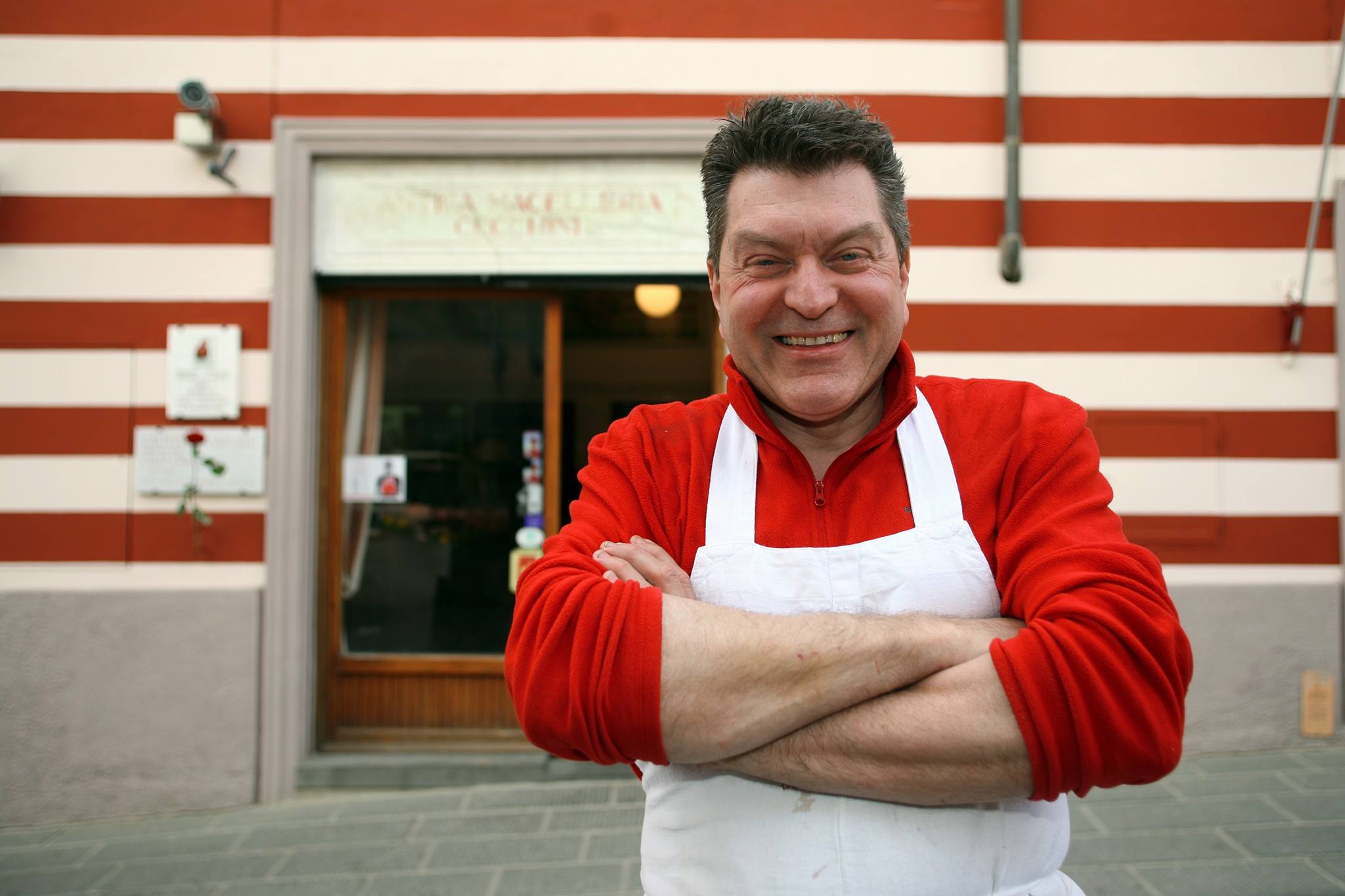
The Famous Tuscan Butcher
The word in the Italian language for butcher is macellaio and the butcher shop is of course the macelleria. Who could ever imagine a butcher shop filled with opera music, an all-day wine and food tasting party and a butcher who recites Dante on a whim?
This is the experience at Dario Cecchini’s shop in Panzano in Chianti––a Tuscan icon himself.
13. Terracotta: the color, the pottery as icons.
This clay is the best in the world for mechanical strength, thanks to the presence of Galestro, a soft rock typical of the area of Florence, Impruneta, which gives the finished product frost resistance at over 20 degrees below zero. The Impruneta clay has an grainy texture which makes it rough to the touch and reddish color with white shades. The design is refined and very well made. If the pots are made using the Colombino technique (by hand) it’s difficult to have perfectly identical copies of the same article. Each piece is unique. Alternatively, you can work with a gypsum mold. The firing process can reach up to 1020-1030 degrees and lasts for about 36 hours which is followed by a further 70 hours for cooling.
The pots and anfora (wine fermentation tanks) produced with this clay from Impruneta are top quality and often found in important gardens and wineries all over the world.
14. Il Toscano, the Tuscan Cigar. A unique “taste” of Tuscany.
The origins of the “Toscano” is a story that started in 1818. Nowadays the tobacco manufacturer in Lucca produces the cigars according to the Toscano tradition. The cigars are produced in the handmade tradition by personnel trained to work with the tobacco representing a true artisan heritage. Wanna impress your buddies at the next house party? Bring along a Toscano.
15. Palazzo Grande a Montepulciano: The Twilight Series
With over 40 million copies sold, the Twilight saga has been a phenomenon. Stephanie Meyer’s successful creation has its second part, New Moon, set in Tuscany, in the small town of Volterra. The powerful Volturi family, originate from Volterra, and so in the second part of the story we take a glimpse at their residence. During the film, we are catapulted into this Tuscan town, as we see Bella running through the crowd in the main plaza to save her beloved Edward from provoking the Volturi into killing him. Except this plaza can’t be found in Volterra. Instead, it can be found in the medieval Montepulciano.
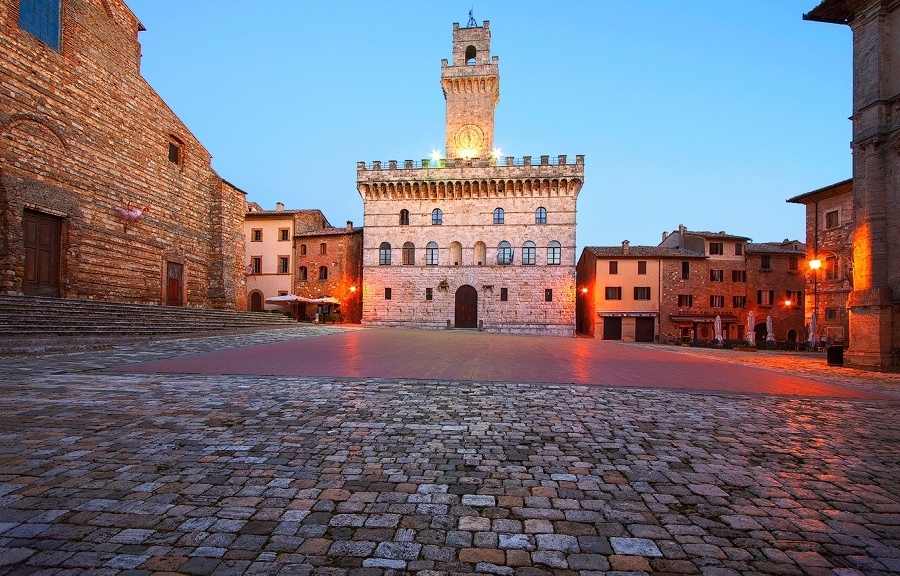
Confused yet? Well, although the story is set in Volterra, the filming was actually done in the smaller, picturesque village of Montepulciano, set high on a hilltop and known for its stunning views of the lush surrounding countryside. It’s here that Bella rushes across the Piazza Grande towards Edward. Indeed, the film should have been shot in Volterra, but the film producers decided on Montepulicano instead. Even though the town of Volterra is wonderful destination with an incredible Etruscan history, it’s easy to see why the producers couldn’t resist the charming Montepulciano.
16. The World’s Most Beautiful Espresso Machine: Made in Tuscany.
“”You can learn a technique, but you can only develop passion through dedication, love, pride and respect in your work.””
– Piero Bambi, La Marzocco
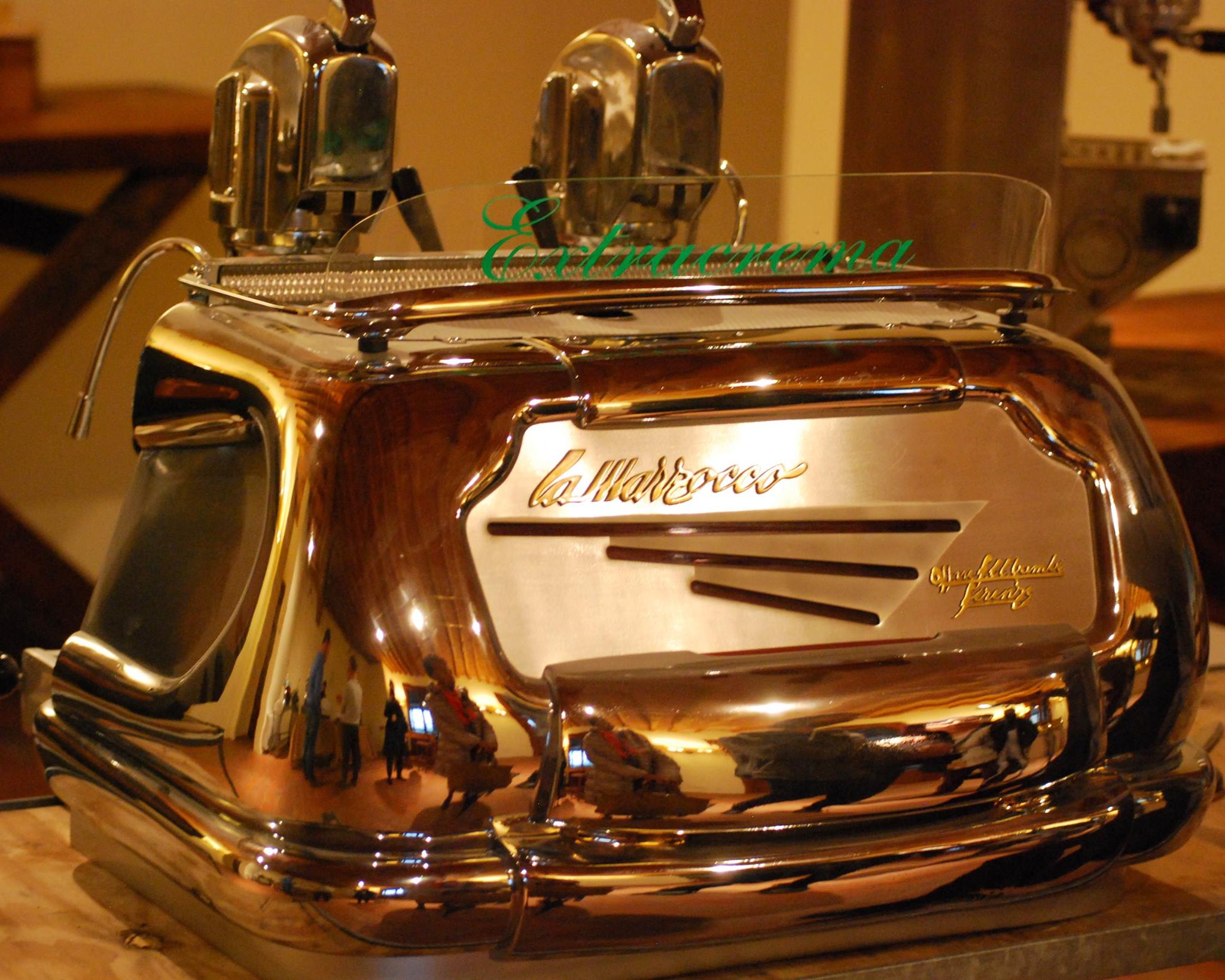
I had the pleasure of meeting Piero Bambi and his team of talented folks at La Marzocco espresso machine factory–located near Florence. This truly is an artisan company. These creative designers and engineers (most of them self-made) are producing the most finely crafted, beautiful espresso machines in the world—with superb attention to detail. Since 1927, Piero’s father and uncle “”””fratelli”” Giuseppe & Bruno Bambi were the original geniuses behind all this—when the concept of “”espresso”” coffee was first invented. So impressive. Start to look around at your local, swanky coffee hangout. These machines are popping up everywhere!
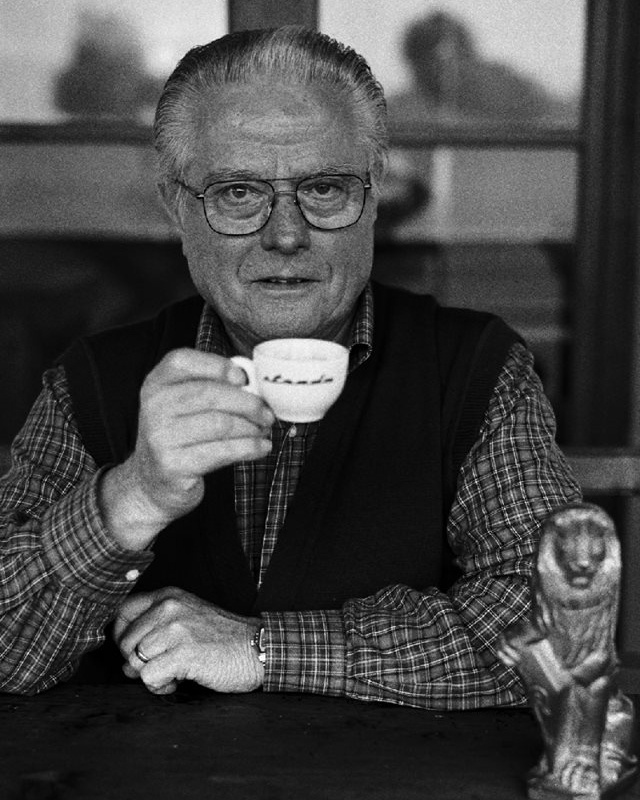
Explore the hidden gems of this remarkable region—join us for adventurous bike tours in Tuscany.
